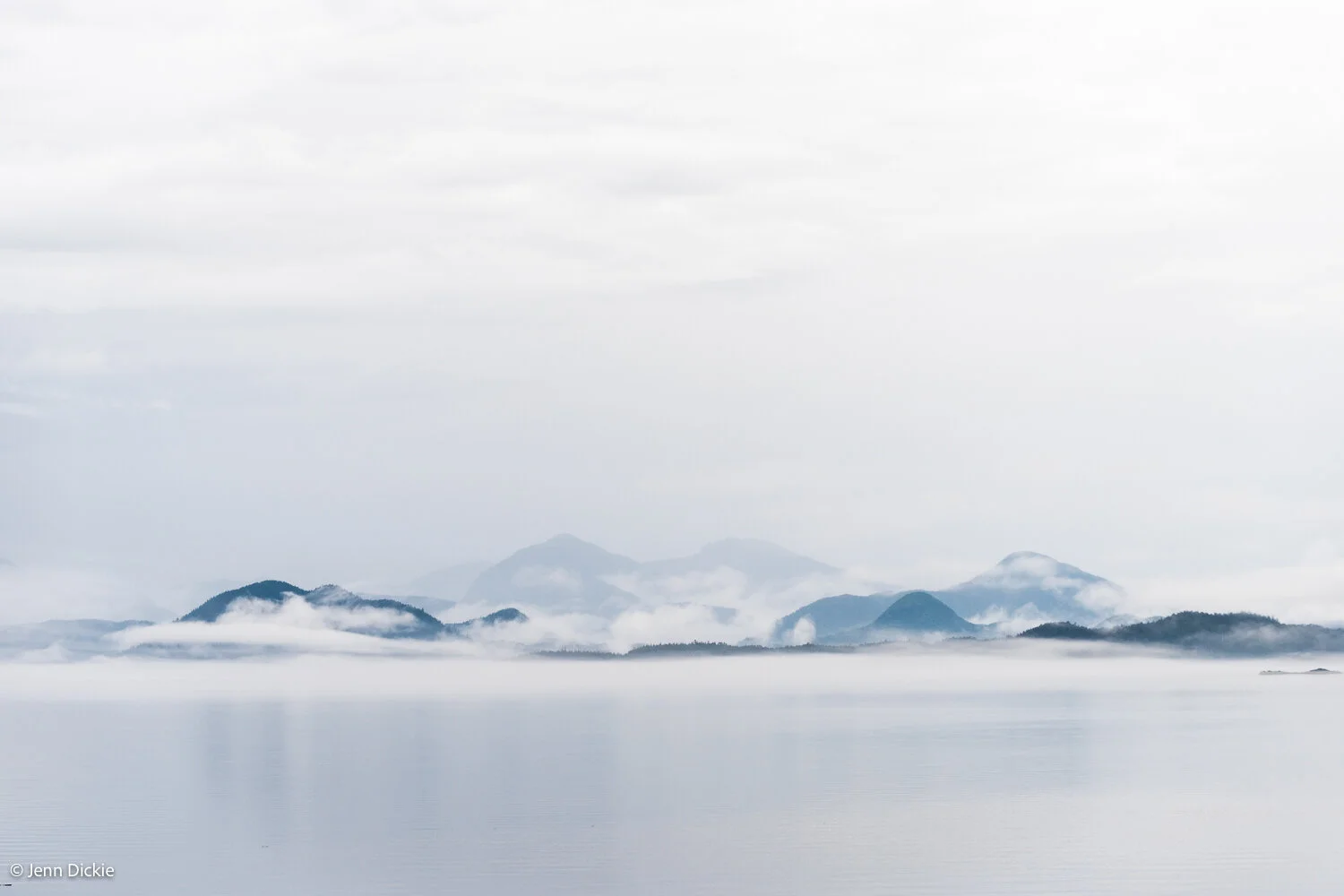
Project details
The marine environment that surrounds the Great Bear Rainforest contains the quietest ocean along the coastline of BC and some of the world’s richest cold-water seas. The Gitga’at First Nation’s waters within this region are home to the highest density of humpback and fin whales along BC’s coast and the continued high occurrence of two orca populations. Pacific white-sided dolphins, Dall’s porpoises, sea lions, seals and a wealth of other marine species are also part of this thriving and complex ocean ecosystem.
Humpback Whales bubblenet feeding in northern Squally Channel, BC. (photo: Jenn Dickie)
Today, fewer than 50 large commercial vessels traverse this part of the Gitga’at First Nation Territory each year. However, increased shipping traffic in prime whale habitat could threaten the recovery of marine mammals where numbers have been slowly growing since the end of commercial whaling. The Squally Channel has been identified as critical habitat and potential critical habitats for the whales using the area; all of which are considered at-risk under Canada’s Species at Risk Act. It is also a core shipping route for many proposals to increase industrial shipping to export energy products such as liquefied natural gas (LNG) and refined petroleum products.
Northern Squally Channel, British Columbia
To reduce the impact of shipping on marine mammals, continuous real-time monitoring of these whales and information on how they use their habitat is needed. SWAG’s four strategically placed hydrophones radio-transmit acoustic data in real time to a field station on nearby Fin Island. hydrophones are monitoring 200 km2 of ocean, collecting natural and man-made sounds — even those at frequencies the human ear can’t detect. From that acoustic data, researchers can pick out whales, triangulate their precise location, determine their numbers, and track their movement in the Squally Channel.
This research will allow SWAG to help the Gitga’at Nation, government agencies and industry implement smart management measures to protect whales and facilitate research on habitat use of cetaceans and their interactions with marine vessels. The project is also developing tools to visualize the presence of both marine vessels and whales in real time, to enable local managers to reduce the risk of ship strikes and other potential negative impacts.
SWAG is a unique educational opportunity for the Gitga’at to learn and use this state-of-the-art technology and increase their capacity to combine contemporary science with their traditional knowledge to pursue their conservation interests and exert their rights to monitor and manage their traditional territory from the impacts of marine traffic.


